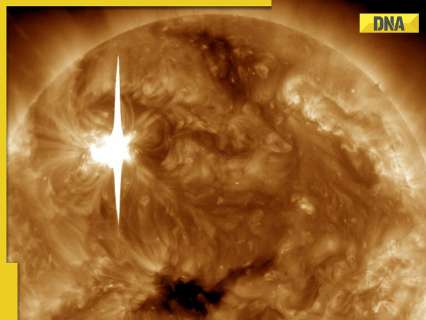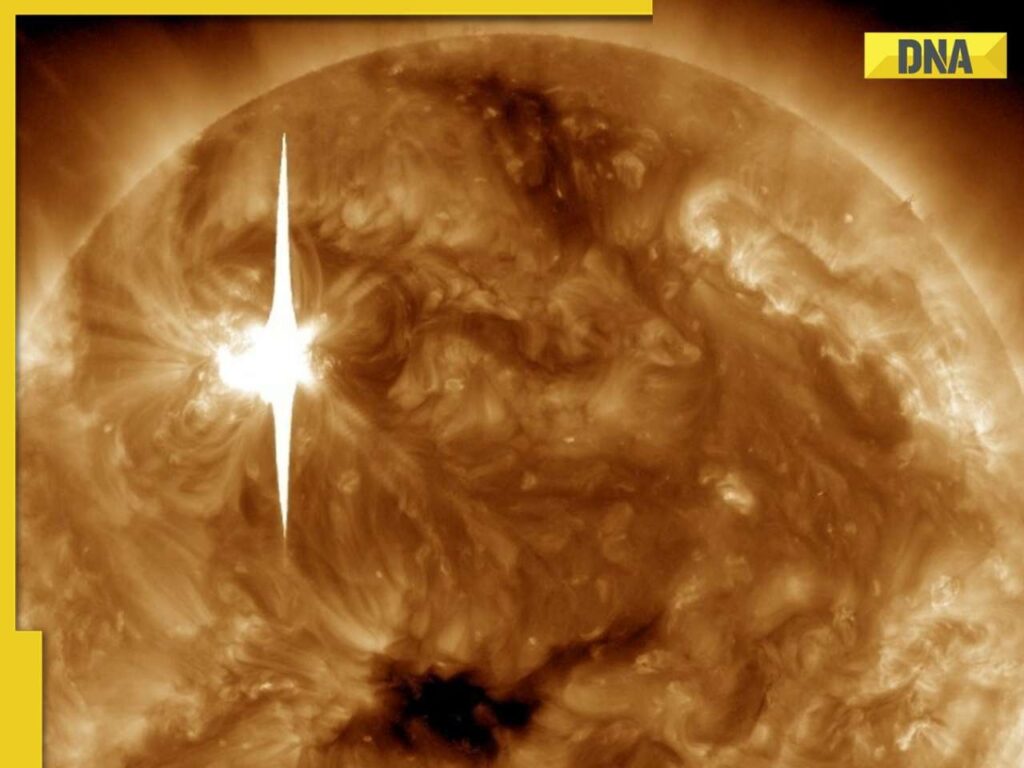
The sun is currently in a period of heightened activity, known as solar maximum, where solar flares and eruptions are more common. Scientists predict that the next few months will see increased solar activity, posing a growing threat to Earth’s technology.
The sun has developed a massive 10 lakh kilometer-wide hole, sparking concerns of a potential global blackout. NASA has issued an alert, warning of the possible impact on Earth. The hole, known as a coronal hole, is releasing solar winds at a speed of 700 kilometers per second.
What is a coronal hole?
A coronal hole is a region in the sun’s atmosphere where the magnetic field is open, allowing solar winds to escape. These solar winds can interact with Earth’s magnetic field, causing geomagnetic storms. NASA’s Solar Dynamics Observatory has captured ultraviolet images of the hole, which is located in the sun’s northern hemisphere.
Impact on Earth
The solar winds emanating from the coronal hole can cause geomagnetic storms, potentially disrupting radio and satellite communications. On May 23, a magnetic filament erupted from the sun’s northern hemisphere, causing a coronal mass ejection (CME) that interacted with Earth’s magnetic field. This resulted in a G1-class geomagnetic storm, causing disruptions to radio and satellite systems.
Small storms, big impact
The sun is currently in a period of heightened activity, known as solar maximum, where solar flares and eruptions are more common. Scientists predict that the next few months will see increased solar activity, posing a growing threat to Earth’s technology.
Effects on technology
Solar storms can weaken radio signals, disrupt satellite communications, and affect power grids. On May 31, a solar flare and CME from the sun’s AR4100 region interacted with Earth’s magnetic field, causing a G2-G3 class storm and radio blackout. NASA’s report warns of potential disruptions to power grids and satellite operations.
The solar winds have also produced stunning aurora displays at lower latitudes, visible to the naked eye. While these displays are breathtaking, they also indicate the potential for disruptions to technology.
NASA’s warning
NASA and NOAA are closely monitoring the sun’s activity, warning of potential disruptions to technology. Scientists advise power grid and satellite operators to be prepared for potential disruptions. The public is also advised to be aware of the potential risks and take necessary precautions.
As the sun’s activity continues to increase, it’s essential to be prepared for potential disruptions. By understanding the risks and taking proactive measures, we can minimize the impact of solar storms on our technology and daily lives.
The massive coronal hole in the sun’s atmosphere poses a significant threat to Earth’s technology. As NASA and NOAA continue to monitor the situation, it’s essential for us to be aware of the potential risks and take necessary precautions. By staying informed and prepared, we can mitigate the impact of solar storms and ensure a safer, more resilient future.

